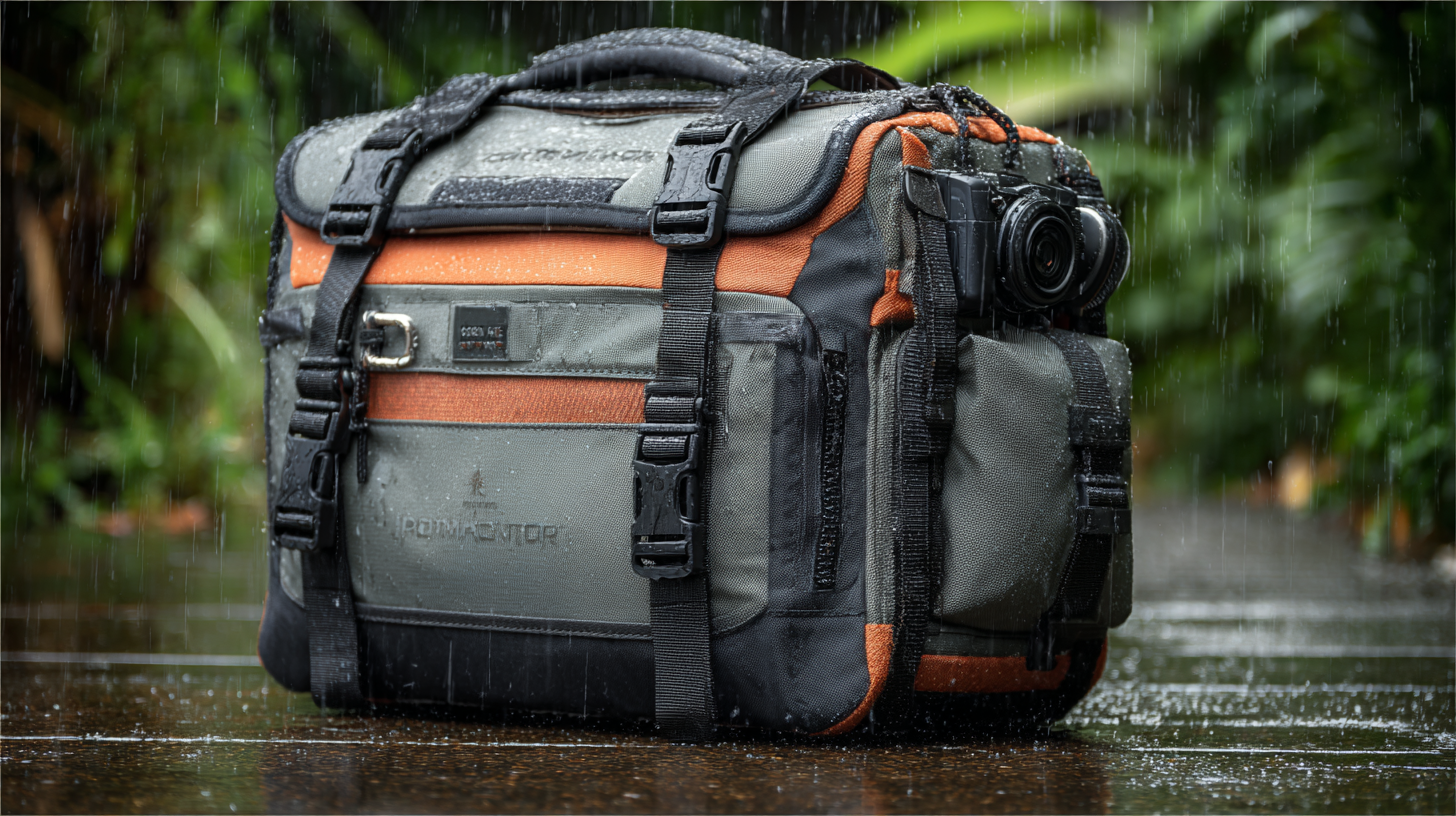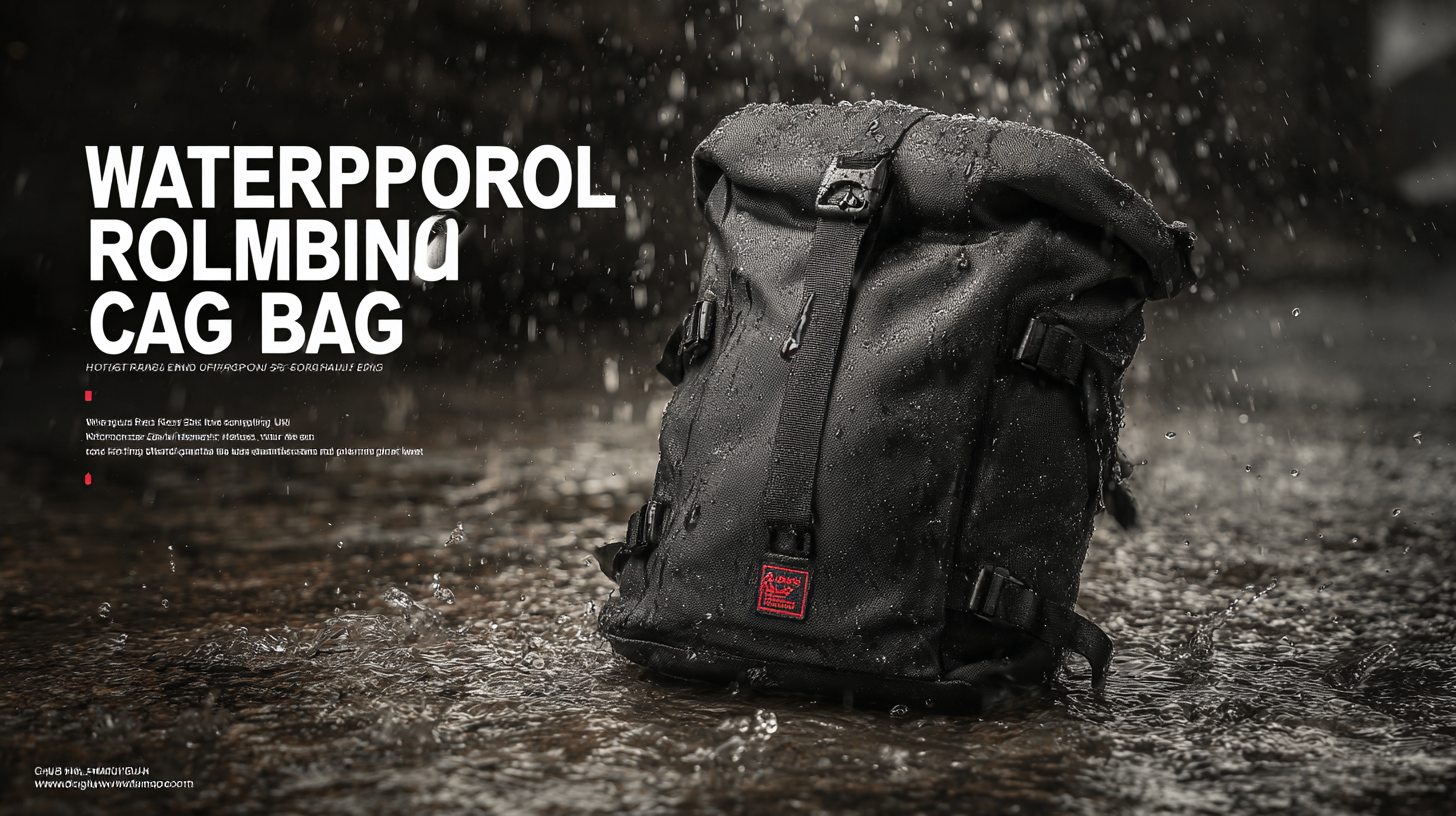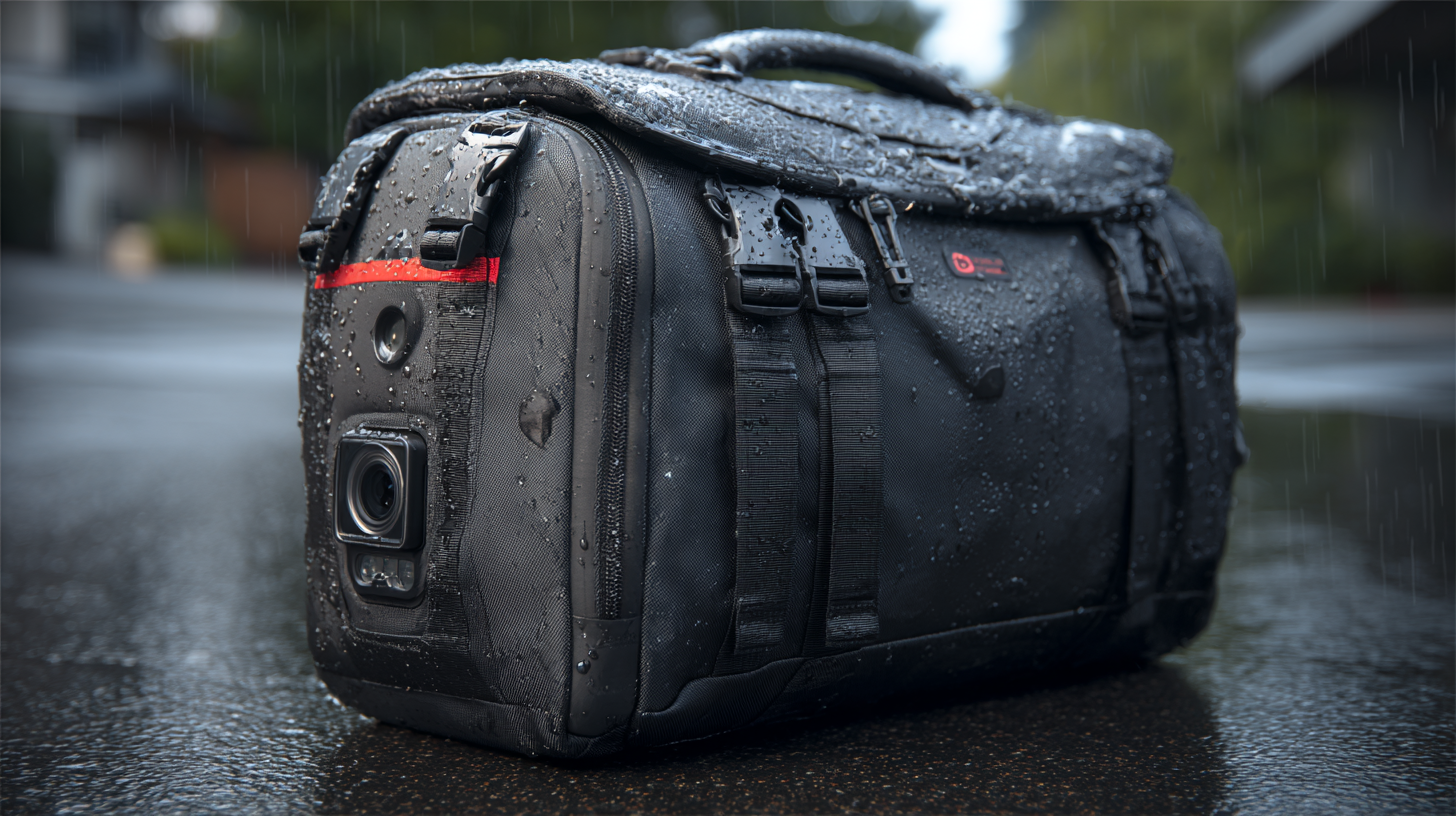As the photography industry evolves, the demand for innovative gear that can withstand challenging environments has never been higher. With a projected CAGR of 6% in the global camera bag market, reaching approximately $300 million by 2025, photographers are increasingly seeking functionality and durability in their accessories. A Waterproof Rolling Camera Bag has emerged as a crucial asset for photographers who traverse diverse terrains—from exotic landscapes to bustling urban settings—ensuring that their valuable equipment is both protected from the elements and easy to transport. In this context, it’s essential to explore unique alternatives that offer both reliability and style, catering to the diverse needs of modern photographers. This blog aims to highlight these alternatives, showcasing the best options that blend innovation with practicality.

When it comes to choosing a waterproof rolling camera bag, photographers often seek alternatives that balance durability with affordability. While traditional models may offer reliable protection for equipment, several innovative options on the market have emerged as worthy contenders. For example, brands like Peak Design and Lowepro have developed lightweight, rugged bags that not only repel water but also withstand the rigors of travel and rugged environments, all while maintaining a competitive price point.
In comparing these alternatives, it's crucial to assess how different materials and designs contribute to their overall durability. Some bags employ high-denier nylon fabrics that enhance waterproofing, while others feature reinforced seams and heavy-duty zippers to ensure longevity. Price-wise, the market offers a variety of choices, ranging from budget-friendly options to higher-end models equipped with premium features. By understanding these aspects, photographers can make informed decisions that fit their specific needs, ensuring their gear stays safe and secure, regardless of the shooting conditions.
This chart compares various alternative waterproof rolling camera bags based on their durability ratings and price points. Durability is rated on a scale from 1 to 10, while prices are given in USD.
When selecting a waterproof rolling camera bag, photographers should prioritize several key features to ensure their gear remains protected in diverse conditions. First and foremost is the durability of materials used in the construction. High-quality, waterproof fabrics such as nylon or polyester with reinforced seams are essential for resisting water and wear over time. Additionally, look for bags that incorporate waterproof zippers and flaps to further safeguard against moisture intrusion.
Another crucial aspect is the internal organization and padding. A well-designed rolling bag should have customizable compartments, allowing photographers to secure their cameras, lenses, and accessories without risking damage during transport. Protective padding is equally important; thick, shock-absorbing foam can prevent impacts and bumps from affecting sensitive equipment. Finally, consider the bag's mobility features, such as sturdy wheels and an ergonomic handle, which are vital for navigating various terrains with ease, especially when carrying heavy equipment. Selecting a bag that encompasses these elements will help photographers venture out on shoots with peace of mind, regardless of the weather conditions.

When it comes to photography gear, the choice of a camera bag is paramount, particularly for those who are environmentally conscious. Eco-friendly camera bags not only protect your equipment but also promote sustainability. Brands these days are offering bags made from recycled materials, such as ocean plastic or organic cotton, making them ideal for the eco-aware photographer. Transitioning to sustainable options doesn’t mean compromising on quality or style – many of these bags provide the same durability and protection as traditional models.

Tip 1: When shopping for a waterproof rolling camera bag, look for brands that emphasize sustainable manufacturing practices. This goes beyond materials to include ethical labor practices and reduced carbon footprints. By doing this, you ensure your purchase supports a better environmental future.
Tip 2: Consider investing in multifunctional camera bags. Many eco-friendly designs offer additional features like laptop compartments, extra pockets for accessories, and modular designs for customization. Such bags not only serve your photographic needs but also adapt seamlessly to your lifestyle, making them a practical and sustainable choice.
In exploring your options, take the time to research the brands that align with your values and needs, ensuring your camera gear is as responsible as it is reliable.
When it comes to photography, mobility can often make or break a shoot. Photographers lugging around heavy gear quickly realize that the weight distribution of their camera bags plays a crucial role in their overall comfort and efficiency on location. A bag that's stacked too heavily on one side can lead to fatigue, muscle strain, and even hinder creativity by disrupting the flow of movement essential for capturing the perfect shot.
To optimize mobility, it’s important to look for bags that prioritize even weight distribution. Many photographers overlook the significance of padding and the structural design of the bag itself. Features such as padded shoulder straps, hip belts, and waist support systems can dramatically alleviate pressure on your back and shoulders, allowing for longer periods of shooting without discomfort. Additionally, choosing a bag that allows flexible carrying options—like handbag, backpack, or messenger style—can enhance versatility, accommodating various shooting styles and terrains.
Incorporating these findings into your choice of camera bag can transform not just the way you carry your gear, but also the overall quality of your work. Taking the time to analyze how weight distribution affects your mobility empowers you to select alternatives that keep you agile, ensuring you never miss those fleeting moments in your photography journey.
When it comes to selecting a waterproof rolling camera bag, photographers often prioritize a blend of durability, functionality, and convenience. Recent customer satisfaction trends illuminate what truly matters to photographers in this competitive market. Many users express a strong preference for bags that offer robust waterproofing without compromising on accessibility. This means that while a bag must stand up to harsh weather conditions, it should also provide quick and easy access to camera gear during pivotal moments.
Another essential aspect that photographers value is the bag’s organizational features. Clear compartments and customizable dividers allow for efficient gear management, ensuring that everything from lenses to accessories is neatly stored and readily available. Additionally, the ability to roll smoothly over various terrains is crucial for outdoor shoots. As photographers venture into diverse environments, the importance of a bag that can withstand the rigors of travel and protect valuable equipment in any situation cannot be overstated. These insights are shaping the development of waterproof rolling bags that not only meet the practical needs of photographers but also enhance their overall shooting experience.
| Feature | Customer Rating (out of 5) | Price Range (USD) | Warranty (Years) | Weight (lbs) |
|---|---|---|---|---|
| Waterproof Material | 4.8 | 150 - 250 | 2 | 5 |
| Rolling Wheels | 4.6 | 100 - 200 | 1 | 6 |
| Interior Customization | 4.9 | 100 - 300 | 3 | 5.5 |
| Accessory Pockets | 4.4 | 80 - 150 | 1 | 4.5 |
| Weather Sealed Zippers | 4.7 | 120 - 220 | 2 | 5.2 |
